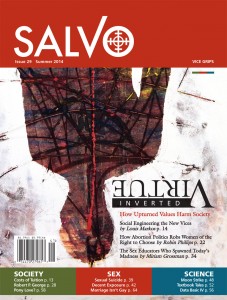
- P) all of the Old Testament laws still apply apart from those which have been specifically repealed, fulfilled or replaced by the New Testament
And
- Q) none of the Old Testament laws still apply apart from those which have been specifically reiterated by the New Testament
This dilemma is resolvable by giving attention to
- S) the hermeneutics of Ancient Near Eastern legal theory assumed by the cognitive structures of their sense construction
And
- P) an imagistic approach to the sufficiency of the Torah
That S and P resolve the dilemma between P and Q should make sense after if I flesh out the content of S and P.
Explanation of S:The hermeneutics of Ancient Near Eastern legal theory assumed by the cognitive structures of their sense construction.
It is now pretty certain that the original audience of Leviticus would have understood the plentiful case laws less literally and more paradigmatically or imagistically than we tend to do. Even saying it like this doesn’t quite get it right since the difference would have been qualitative rather than quantitative. The very cognitive structures that go into reading the biblical laws would have been narrative and visual, rather than semantic and literal. What this means practically is that legal disputes among God’s people would not have been settled by seeing whether the dispute was ‘covered’ by the literal meaning of the case laws given in the Torah, but by asking whether the dispute is sufficiently similar to the image evoked by the law to justify invoking its use in order to resolve the conflict in question. If it is sufficiently similar, it applies, even when the literal meaning of the words do not. Now because “how similar” questions are evaluative, there would have been a huge discretionary element among the judges of Israel. A good judge would have required more than just knowledge of the law; rather, he needed to have a sense of spiritual wisdom that could only be gained only through a great deal of reflection on and understanding of the whole of God’s law. I am indebted to Jonathan Burnside for helping me to understand this in his article on Exodus 22. He notes that
“Modern scholarly assumptions on how to read biblical law are often based on the values of modern liberalism, particularly the ‘rule of law’ (the belief that adjudication should be governed by laws and not by people). The dominant paradigm of ‘conventional meaning’ today is ‘literal meaning’, which is closely tied (as its name suggests) to writing. When we talk about literal meaning, we often ask what situations the words ‘cover’. However, there is another way of thinking about language and about legal rules. Instead of asking, What situations do the words of this rule cover?, we may ask, What typical image(s) do the words of this rule evoke? What situations (within known social contexts) does it make you think of? It is a picture-oriented or ‘imagistic’ approach, rather than a literal one. Bernard Jackson [in Studies in the Semiotics of Biblical Law] persuasively argues that this latter approach is more appropriate for understanding biblical law.”
This distinction between ‘literal’ and ‘imagistic’ approaches is an important one in practice. Rules that are read literally cover all cases that may be included under their language. By contrast, rules that are understood as ‘pictures’ apply only to the typical cases they make you think of. Take a simple example, such as the ‘eye for eye, tooth for tooth’ formula in Exodus 21:24–25. One of the classical arguments against this rule (posed by Plato and others) was, What happens if a one-eyed man puts out one of the eyes of a two-eyed man? This objection assumes a literal reading: namely that the rule applies whatever the circumstances of the parties. A literal application of the ‘eye for an eye’ rule would mean that the offender’s eye must be taken, even though this means that he will be rendered completely blind, whereas his victim was left half-sighted.
An alternative approach, preferred by Jackson, is to read Exodus 21:24–25 ‘imagistically’. The typical offender is ‘pictured’ as a two-eyed man. This means that the case of the one-eyed offender is far removed from the typical case. Under this ‘picture-oriented’ approach, the further the real-life case is from the ‘typical case’ the less likely it is that the rule applies and the more room there is for negotiation between the parties.
The question is no longer whether the dispute is ‘covered’ by the literal meaning of the words of the rule, but whether the dispute is sufficiently similar to the picture evoked by the rule to justify its use in order to resolve the problem. If it is sufficiently similar, it applies, even though it is not the literal meaning of the words. There is an example of this in the New Testament, where Paul argues that Deuteronomy 25:4 (the ban on muzzling oxen) is not solely concerned with oxen but ‘applies’ to those who proclaim the gospel (1 Corinthians 9:9, 14). For some, a ‘pictureoriented’ or ‘imagistic’ approach to biblical law might seem rather strange. But this is what historians are always discovering about the way people other than ourselves thought. In fact, resistance to this way of reading biblical law may simply show how ingrained literal meaning has become in our culture.
Significantly, questions of relative similarity evoke intuitive judgements of justice to a greater degree than literal interpretations. ‘How similar…’ questions are evaluative questions (‘how justified is it to treat these cases as similar?’). This in itself suggests a more popular form of dispute resolution than we are used to. It also means that biblical law demanded a great deal of private and creative reflection (see, for example, Deuteronomy 6:6–9). The role of the law in educating and instructing in wisdom is affirmed in the New Testament. In Galatians 3:24–25, for example, Paul compares the function of the law to that of a pedagogue who was responsible for a Greek boy’s early discipline and education.”
Explanation of P: “an imagistic approach to the sufficiency of the Torah”
P is a corollary of S. The understanding of the Torah articulated in the above explanation of P helps with the doctrine of scripture’s sufficiency. The Pharisees and contemporary orthodox Judaism have gone wrong by attempting to fill in the gaps of scripture with further positive law. However, to quote again from Burnside (this time from his article “What Shall We Do with the Sabbath-Gatherer? A Narrative Approach to a ‘Hard Case’ in Biblical Law”)
…there is considerable evidence that biblical law has no such aspirations towards completeness which in turn means that perceived ‘gaps’ are not as problematic as they are in a modern legal system. In addition, there also appears to be a difference between modern and biblical law in terms of how any ‘gaps’ that might arise are addressed. Phillips and Sakenfeld assume, without further argument, that ‘gaps’ should be ‘filled in’ by further, positivist, law. By contrast, the biblical materials point towards ‘wisdom’ as being the primary means by which ‘missing’ and ‘hard’ cases are resolved (e.g. Exod 18:19-22, 2 Sam 14:2-21; see generally Jackson, 2006, pp. 411-425).
While the Pharisees were right in believing that there is nothing on which God’s laws do not give us proper direction, they were wrong in thinking that the completeness had to be generated through the proliferation of new case laws (technically “explanations” but functionally new case law).
Where This Takes Us
When we factor in S, namely, “the hermeneutics of Ancient Near Eastern legal theory assumed by the cognitive structures of their sense construction”, with P, namely “an imagistic approach to the sufficiency of the Torah” (which is itself a corollary of S), then the debate evacuates between those who say
- (P) all of the Old Testament laws still apply apart from those which have been specifically repealed, fulfilled or replaced by the New Testament
and those who say
- (Q) none of the Old Testament laws still apply apart from those which have been specifically reiterated by the New Testament.
This is because both P and Q involve a naïve reading of Biblical law which sees each law as applying to situations ‘covered’ by the meaning of the literal words. However, provided that one holds to the more mature approach of S and P above, the extremes of P and Q meet. They meet – and here’s the crux of my whole argument – at precisely that place which recognizes that the circumstances of life in the New Testament period is itself a coordinate that must be factored into the imagistic application of case law – a factoring which is, in principle, no different to how those laws would have been appliedwithin Old Testament times. Put another way, the “how similar?” questions assumed by Ancient Near Eastern hermeneutics, already have embedded within it the mechanism for assessing the application of those laws within New Testament society (or hypothetically within other pre-New Testament societies) without having to invoke the theological issues of continuity and discontinuity on which such questions have traditionally hinge
[facebook-comments-master-un]Three Ways You Can Support This Blog
Get a copy of my book……..Buy our Essential Oils…………..Subscribe to Salvo




